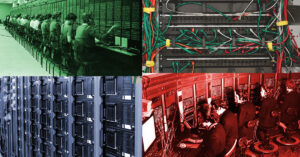 Part 1 of the Intellyx Intelligent Automation Series for Krista Software
Part 1 of the Intellyx Intelligent Automation Series for Krista Software
When customers and employees try to get something novel done within an app that depends upon back end systems, the integration work of meeting that request can create real pain.
Integrating systems has been a problem since there was a second system.
Anyone who has ever witnessed an ETL exercise where data engineers must constantly ‘extract, transfer and load’ volumes of data to feed a decision support tool knows exactly the pain I’m talking about.
Accelerating work with processes and data anywhere
Businesses create automation across disparate systems through integration: extracting available services, processes and underlying data, in order to feed them into an application, which kicks off other processes and gives end users relevant information to do the work at hand.
Applications must integrate with many systems that are both on-site and in the cloud. In addition to fetching records from core applications and business process silos, they must share data through REST APIs, event buses and SaaS apps.
Fortunately, there are now plenty of mature integration tooling vendors that offer piping: adapters and platforms that allow systems to pass requests and data to each other. This has been a great boon for development teams — as they can quickly assemble and connect sources of data that will feed their target application’s functionality.
Though integration tools have removed much effort, they cause application consumers to expect faster integration and solutions delivery. This has drastically increased the workload of new and unique business processes for developers to build — however, these tools require special skills and there is an ever-increasing backlog of integration tasks.
Even when using a low-code application builder, there is usually some integration understanding required to know which APIs are available to stitch together complex business processes. Therefore, the end customer will usually need to file an IT request ticket and line up in the queue to wait for a reasonably skilled technical resource to hook up APIs and enable the process.
Yes, we now have access to more integrated IT capabilities than ever, yet we still lack change-time integration between systems and the people who need them. Despite the hype, RPA bots also require programming changes, adding to the friction of backlogs and delays. Integration through programming can never keep up with changing priorities.
Wouldn’t it be better if users could avoid integration and get what they want by just having a conversation with all of the underlying systems?
Read the entire Part 1 of this series on the Krista Software blog: https://kristasoft.com/conversations-are-the-integration-model-for-people-and-now-systems/



